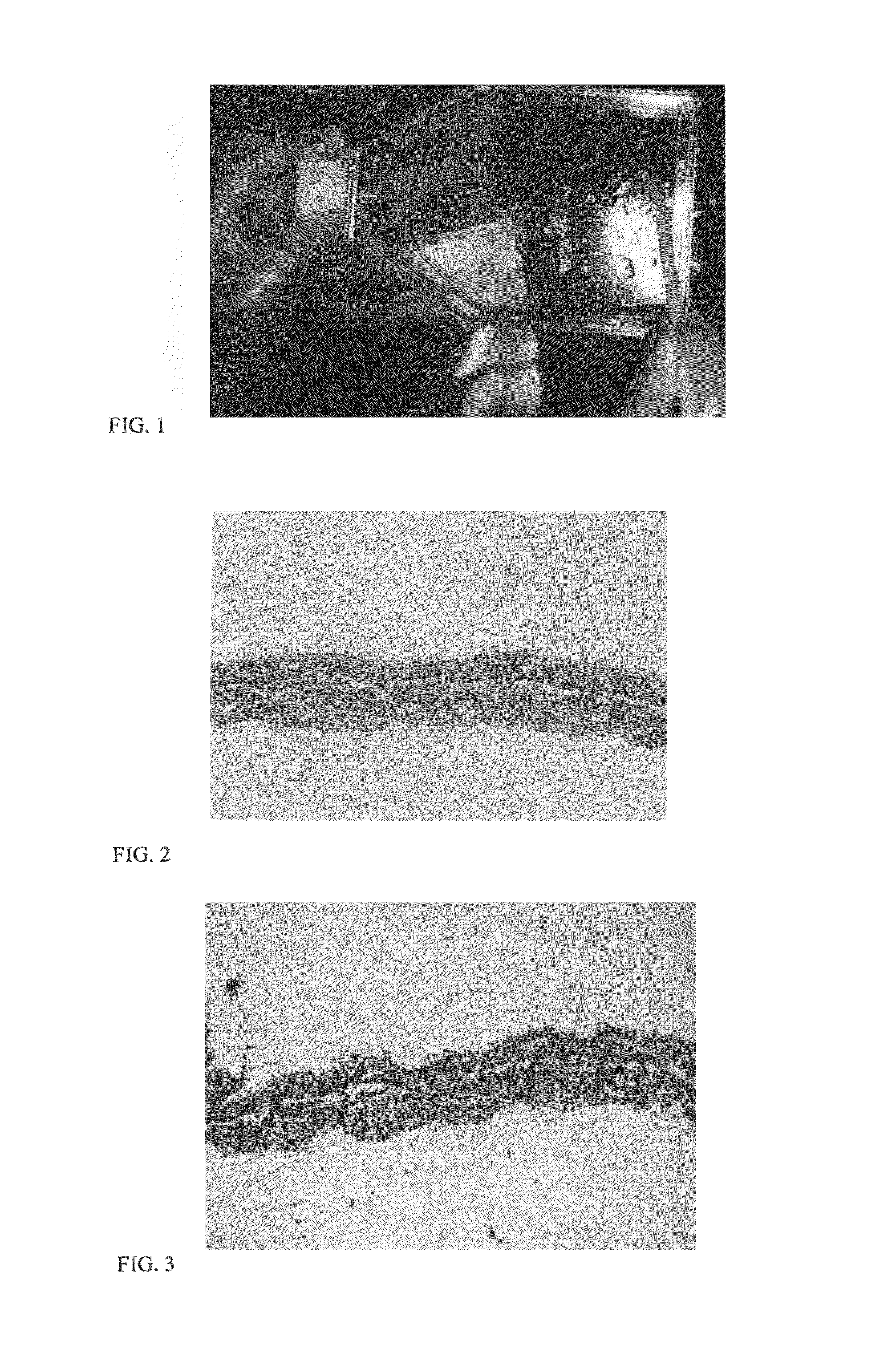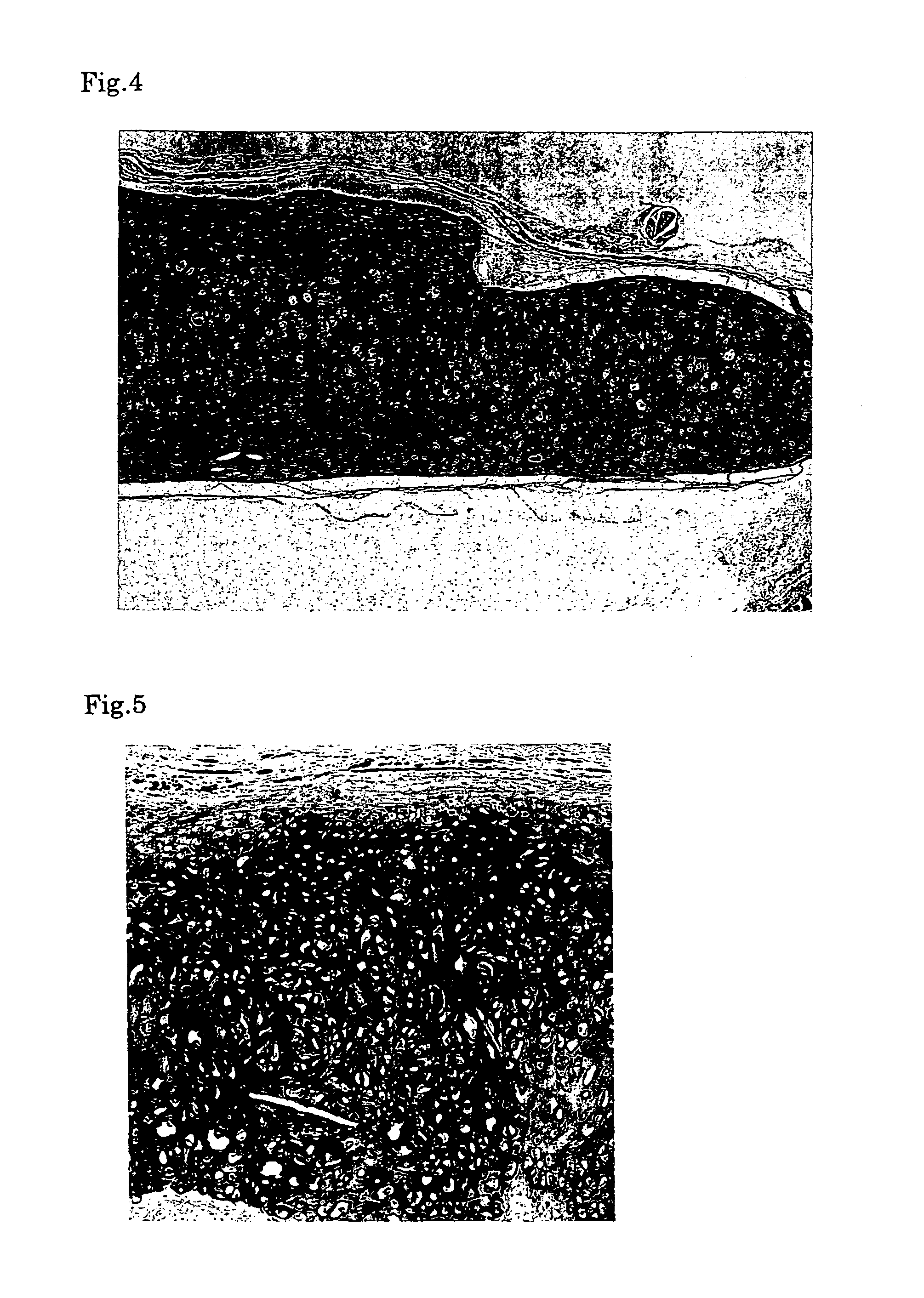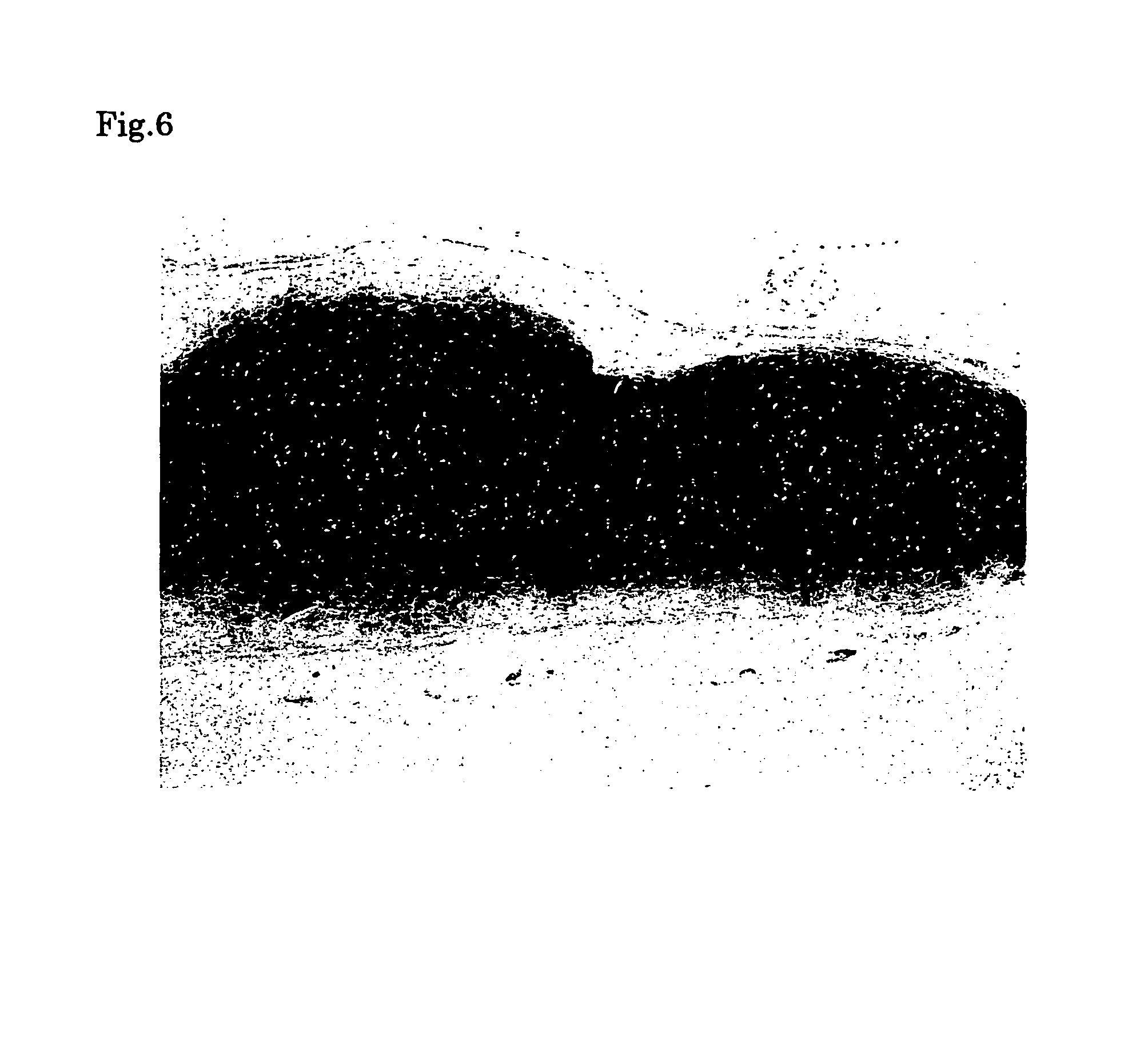Process for producing cartilage cells for transplantation
a technology of cartilage cells and cartilage, which is applied in the direction of skeletal/connective tissue cells, prosthesis, biocide, etc., can solve the problems of inability to obtain a sufficient amount of human chondrocytes using the currently available methods, and the difficulty of applying human chondrocytes to transplantation therapy in practice,
- Summary
- Abstract
- Description
- Claims
- Application Information
AI Technical Summary
Benefits of technology
Problems solved by technology
Method used
Image
Examples
example 1
Chondrocyte culture
[0050]Composition of culture medium: To the DME(H) medium, 10% of FBS, 10 ng / ml of human FGF (Kaken Pharmaceutical Research Institute), 40 ng / ml hydrocortisone (Sigma) and 5 ng / ml human IGF-I (GIBCO) were added.
[0051]Collected cartilage: From human rear auricular cartilage, a sample piece (about 1×1 cm2) having perichondrium bonded to one face was collected.
[0052](a) Chondrocyte Fraction
[0053]The cartilage piece obtained above was disinfected with penicillin G (800 u / ml), kanamycin (1 mg / ml) and Fungizone (2.5 ug / ml). It was then diced with a scalpel and then allowed to stand in F-12 medium containing 0.3% of type II collagenase (Worthington Biochemical) at 4° C. overnight. On the next day, the culture medium was shaken at 37° C. for 4 hours and centrifuged. The precipitate thus obtained was employed as a cell fraction at the initiation of the culture.
[0054](b) Primary Culture
[0055]The cell fraction as described above was seeded by using the above-described medium...
example 2
Transplantation of Chondrocytes
[0061]First, the medium was removed from the culture flask and the cells were harvested with a cell lifter. Then the harvested cells were collected with a syringe. Next, the chondrocytes collected into the syringe were injected into a defect in a cartilage of a nude mouse by using an injection needle. Six months after the transplantation, a specimen was sampled from the transplantation site and histologically examined to confirm the success in engraftment. When the sampled tissue was stained with hematoxylin-eosine (HE), namely, it was observed that cells were multilayered and bonded to each other via the matrix (FIG. 4). When the cells were immunologically stained for type II collagen serving as a molecular marker of cartilage tissue, the extracellular matrix was stained, indicating that the extracellular matrix was a cartilage-specific matrix (FIG. 5). Moreover, metachromacia was shown in toluidine blue staining, indicating the presence of aggrecan s...
PUM
| Property | Measurement | Unit |
|---|---|---|
| area | aaaaa | aaaaa |
| culture time | aaaaa | aaaaa |
| area | aaaaa | aaaaa |
Abstract
Description
Claims
Application Information
 Login to View More
Login to View More - R&D
- Intellectual Property
- Life Sciences
- Materials
- Tech Scout
- Unparalleled Data Quality
- Higher Quality Content
- 60% Fewer Hallucinations
Browse by: Latest US Patents, China's latest patents, Technical Efficacy Thesaurus, Application Domain, Technology Topic, Popular Technical Reports.
© 2025 PatSnap. All rights reserved.Legal|Privacy policy|Modern Slavery Act Transparency Statement|Sitemap|About US| Contact US: help@patsnap.com



